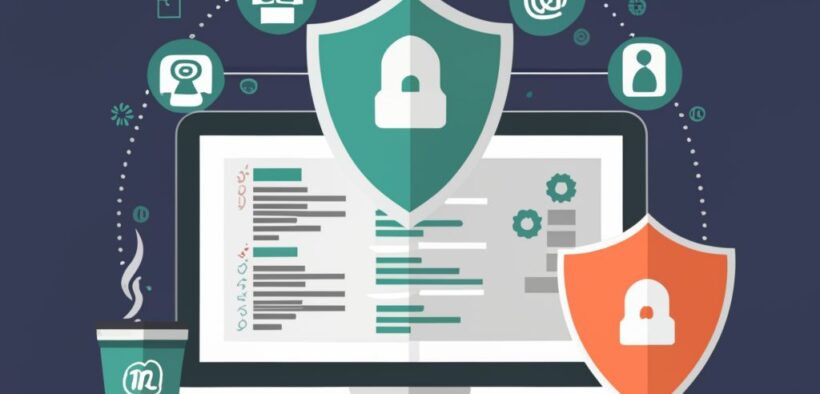Top 10 Network Security Providers for Education Sector in 2024
Share

The education sector holds a treasure trove of sensitive data, from student records and research to personal information and intellectual property. As educational institutions increasingly embrace digital learning and online platforms, robust network security becomes paramount. This article delves into the intricacies of network security for educational institutions, highlighting the top 10 providers and the crucial factors to consider when making a selection.
Top 10 Network Security Providers for Education
- Perimeter 81: Stands out for its Zero Trust approach, offering granular access control and strong authentication features. They excel in securing remote workers and BYOD environments.
- Cisco Systems: A well-established brand with a comprehensive suite, including advanced malware protection, firewalls, and cloud security solutions. Their physical security solutions like CCTV integration can be valuable for campuses.
- Palo Alto Networks: Renowned for their next-generation firewalls with deep inspection capabilities (appID, userID, contentID) for advanced threat detection. They offer strong URL filtering and sandbox analysis for added protection.
- Sophos: Provides a synchronized ecosystem of security solutions, including endpoint protection, firewalls, and cloud security. Their Intercept X leverages AI and deep learning for advanced threat detection and mitigation.
- McAfee: Offers Endpoint Detection and Response (EDR) capabilities alongside traditional endpoint protection, enabling proactive threat hunting. Their MVISION Mobile Advanced solution caters specifically to educational institutions.
- Symantec (Broadcom): Offers comprehensive data-centric security solutions, ideal for protecting student information. Their advisory services can help assess your current security posture and identify gaps.
- Trend Micro: A flexible solution that can be deployed across physical, virtual, and cloud environments. Their agentless endpoint security reduces IT workload and offers data loss prevention (DLP) capabilities.
- Barracuda Networks: Specializes in protecting against sophisticated attacks like botnets and DDoS. Their cloud-based threat intelligence system ensures real-time protection against evolving threats.
- IBM Security: Offers a wide range of security tools, including SIEM, endpoint management, and data security solutions. Their AI-powered threat detection and advanced analytics can be valuable for larger institutions.
- Aruba Networks: A good fit for mid-sized and smaller institutions with their Aruba ESP solution. They focus on ease of use, AI-driven analytics, and secure remote access options.
5 Reasons to Prioritize Network Security in Education
Network security safeguards against a multitude of threats in the education space, including:
- Data breaches and identity theft: Educational institutions hold a wealth of sensitive data, making them prime targets for cybercriminals. Network security solutions protect this data, preventing unauthorized access and mitigating the risk of breaches.
- Disruptions to educational continuity: Ransomware attacks and other cyberattacks can cripple an institution’s IT infrastructure, disrupting educational services and jeopardizing student learning. Effective network security measures minimize such disruptions.
- Compliance with regulations: Numerous regulations mandate data protection and privacy for educational institutions. Network security solutions help institutions comply with these regulations, avoiding hefty fines and reputational damage.
- Safeguarding intellectual property: Universities heavily rely on research and intellectual property. Robust network security protects this valuable data from theft and exploitation.
- Promoting a safe learning environment: Content filtering and monitoring tools within network security solutions help curb cyberbullying and restrict access to inappropriate content, fostering a safer online learning environment.
11 Best Practices for Network Security in Education
- Comprehensive risk assessment: Regularly evaluate network vulnerabilities, considering the diverse devices and technologies used in educational settings.
- Data encryption: Utilize strong encryption standards for data at rest and in transit, especially for student information and research data.
- Multi-factor authentication (MFA): Implement MFA for accessing network resources, particularly for administrative and faculty access.
- Regular software updates and patching: Keep all systems, applications, and security tools up-to-date with the latest patches to address known vulnerabilities.
- Tailored access controls: Define user roles and permissions based on the least privilege principle, limiting access to network resources based on user needs.
- Cybersecurity education and training: Regularly train students, faculty, and staff on cybersecurity best practices and potential threats.
- Secure Wi-Fi networks: Ensure Wi-Fi networks are secure, using WPA3 where possible, and consider separate networks for faculty, students, and guests.
- Endpoint protection: Deploy robust antivirus and anti-malware solutions on all devices accessing the network, including BYOD (Bring Your Own Device).
- Network segmentation: Divide the network into segments, isolating critical systems and data from general user access.
- Incident response planning: Develop and regularly update an incident response plan that includes procedures for responding to different types of cyber incidents.
- Regular backups and recovery plans: Maintain regular backups of critical data and test recovery procedures to ensure data can be restored after a cyber incident.
7 Tips to Choose the Right Network Security Provider
- Compatibility with existing infrastructure: Ensure the provider’s solutions function well with your existing software platforms and network infrastructure.
- Range of security features: Opt for a service offering a comprehensive range of security features, including firewalls, intrusion detection and prevention, malware protection, and data encryption.
- Reputation and reliability: Research the provider’s history of success in the field. Read reviews, case studies, and recommendations to assess their effectiveness in defending against cyber threats.
- Cost and budget considerations: Evaluate several providers based on their prices, considering the whole cost of ownership (including setup, subscription, and any extra fees). Ensure the price aligns with the level of protection you require.
- Scalability: Choose a service that can adapt to your institution’s needs as it expands. The security solutions need to be flexible enough to handle growing network demands.
- Ease of use and management: Consider how user-friendly the provider’s solutions are. Evaluate how your IT department will learn the system, the setup complexity, and if the vendor offers centralized administration features.
- Customer support: Assess the accessibility, response speed, and technical expertise of the customer service. Explore the SLAs to learn about the provider’s promises regarding uptime, response times for assistance, and resolution times.
Remember, this is not an exhaustive list, and the best provider for your institution will depend on your specific needs and budget. It’s crucial to conduct thorough research, compare features, request demos, and consult with security experts before making a final decision.
A Few Points to Consider
- Data residency: Consider where your data will be stored and processed by the provider. Choose a provider that complies with data privacy regulations relevant to your location.
- Integration with existing security tools: If you already have security tools in place, ensure the provider’s solutions integrate seamlessly to avoid creating siloed security systems.
- Professional services: Many providers offer professional services, such as network security assessments, penetration testing, and incident response training. Explore if these services are included or available for an additional fee.
By prioritizing network security and carefully selecting the right provider, educational institutions can safeguard their valuable data, ensure the continuity of education, and create a safe and secure learning environment for all.


